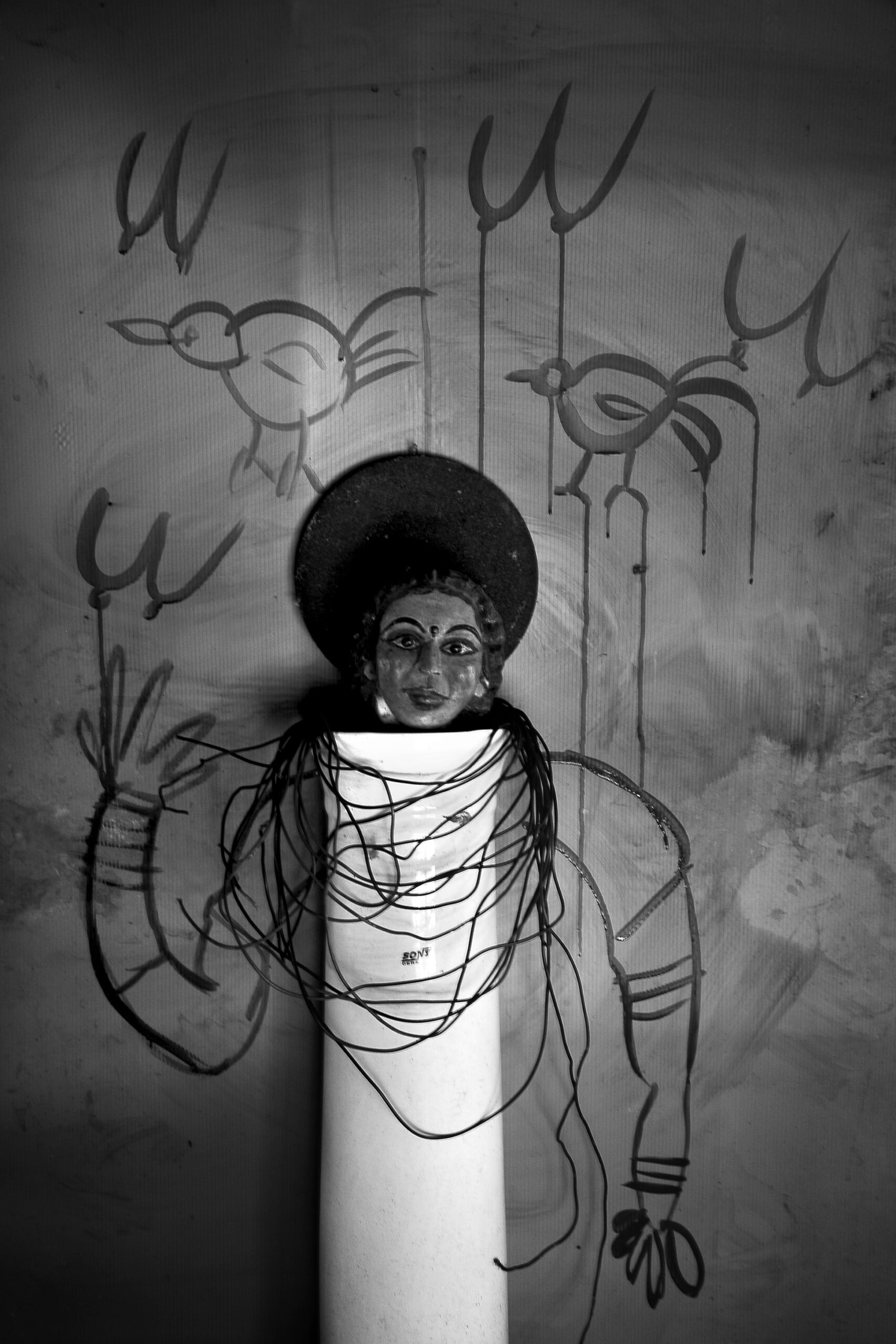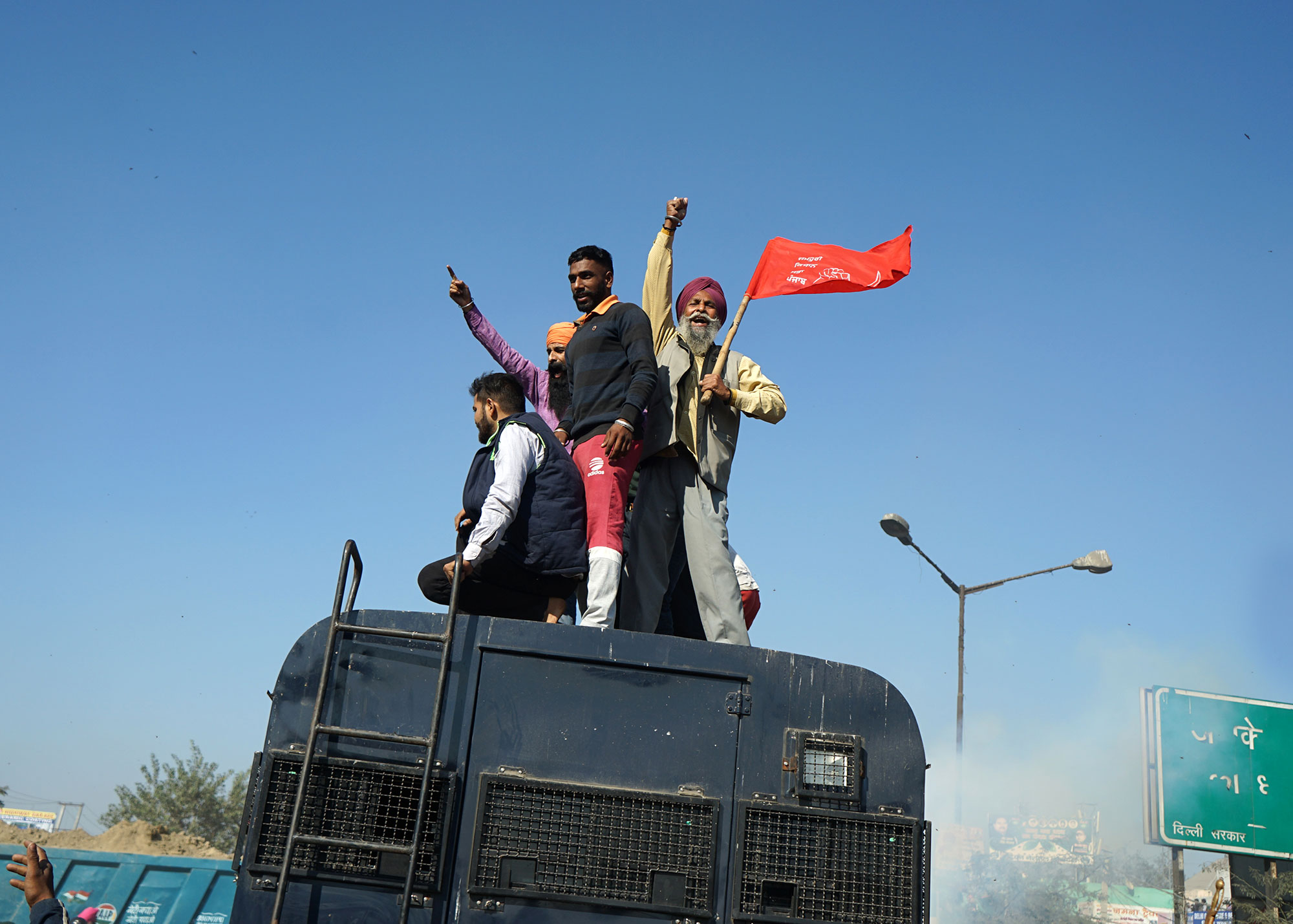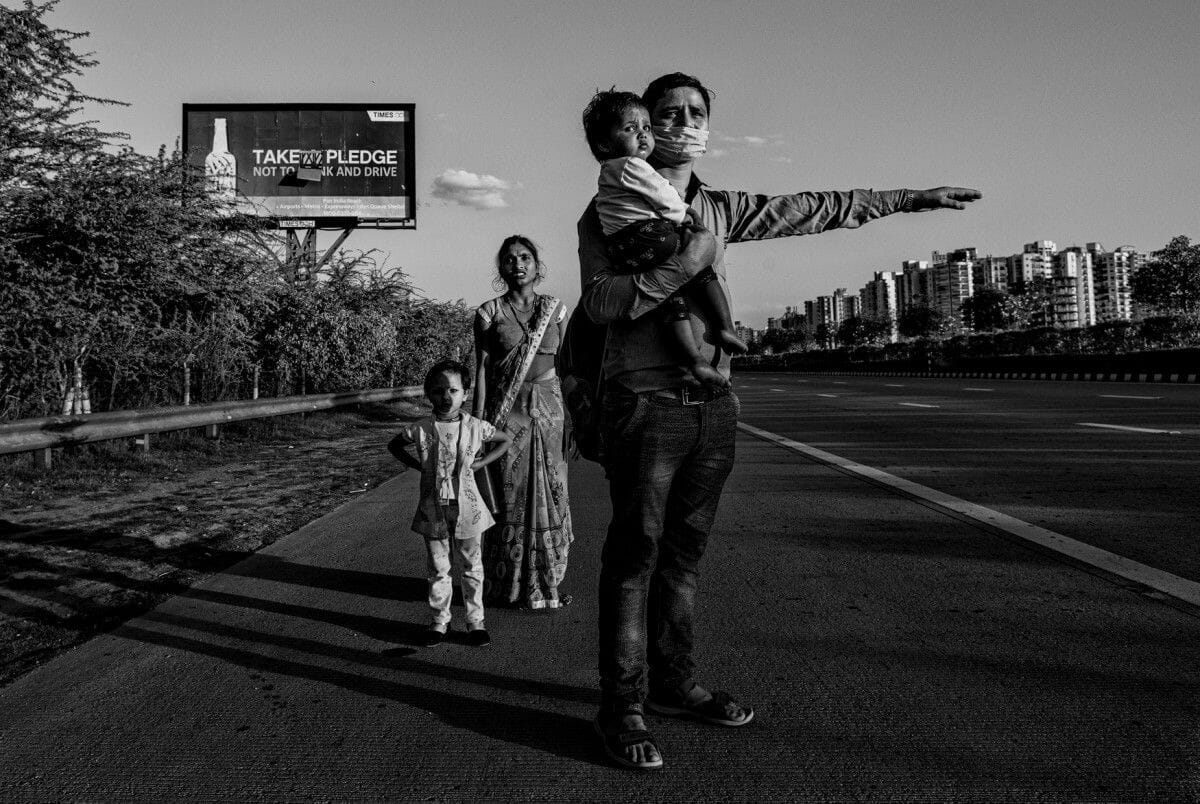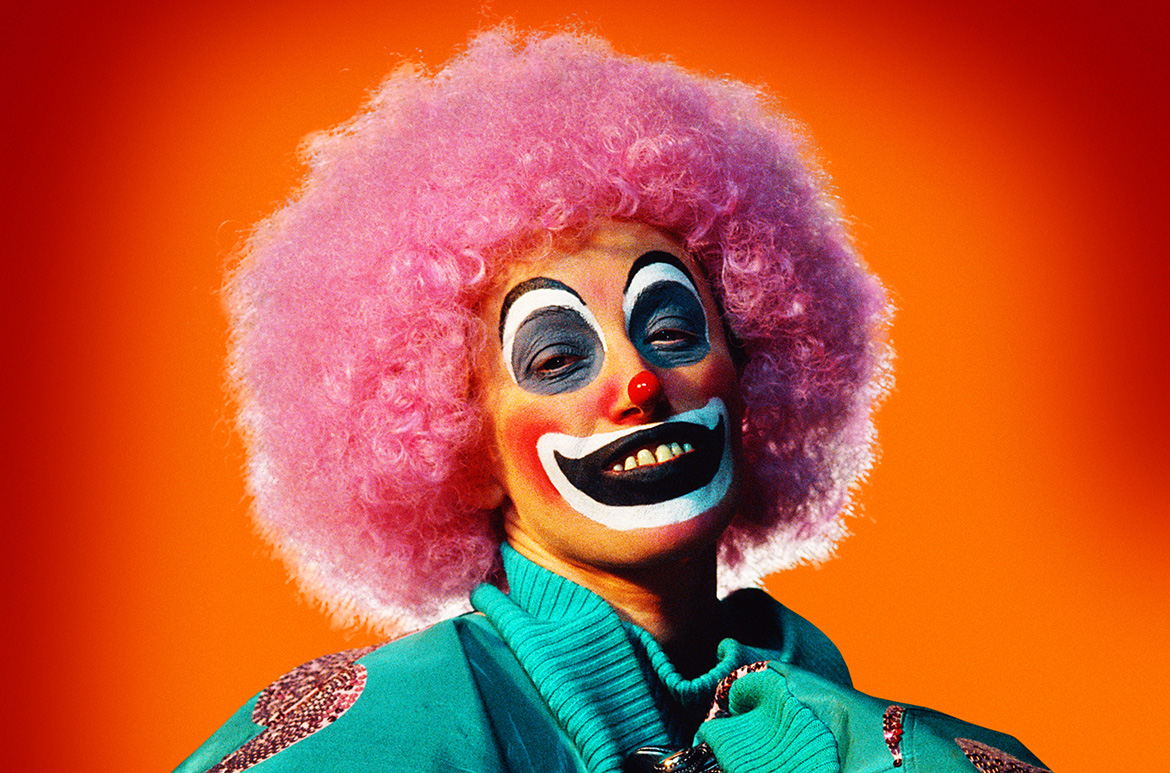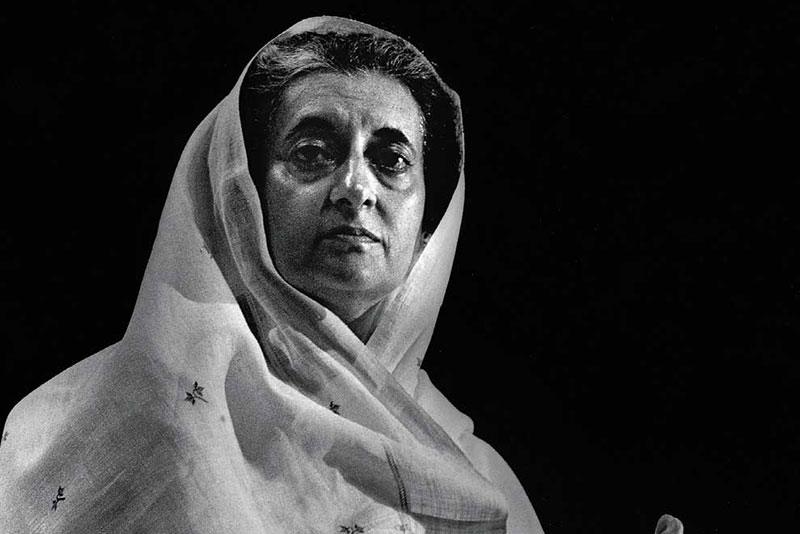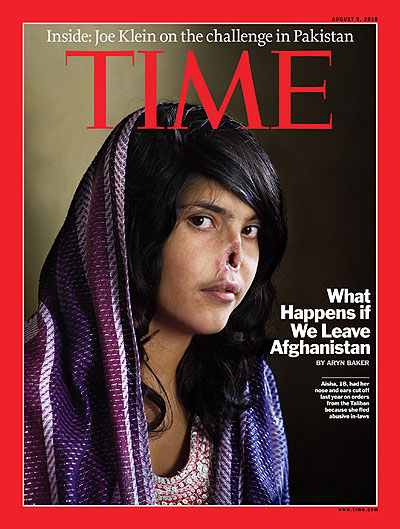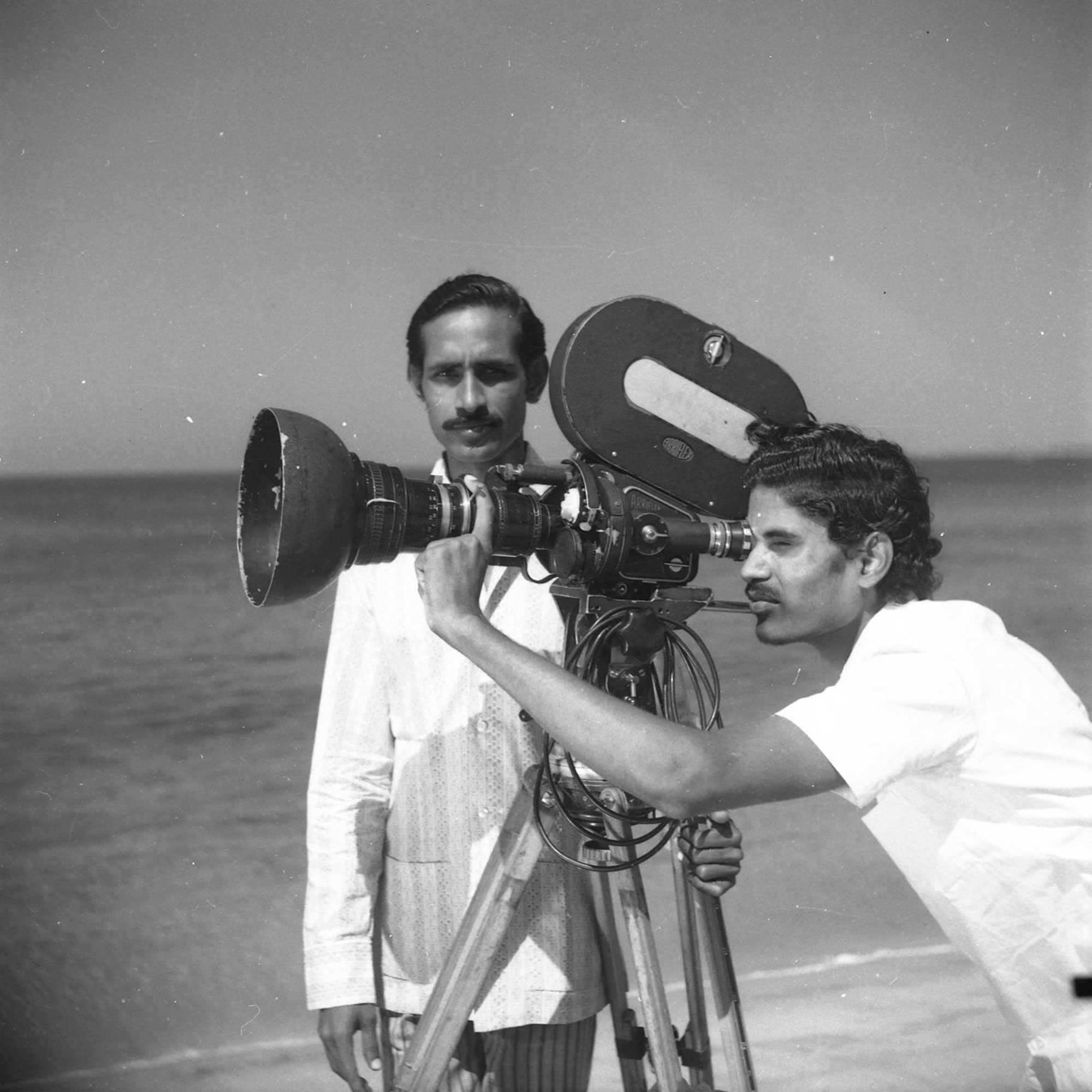Focus
Opinion
Photo Mail focuses on
Contemporary photography
Practitioners, their works, and
Its aesthetics
In the broader context of
Photographic theory and
Philosophy
This Editorial article reviews
Allessio Mamo’s ‘Dreaming
Food‘ photography series
In the broader context of
Indian Photography
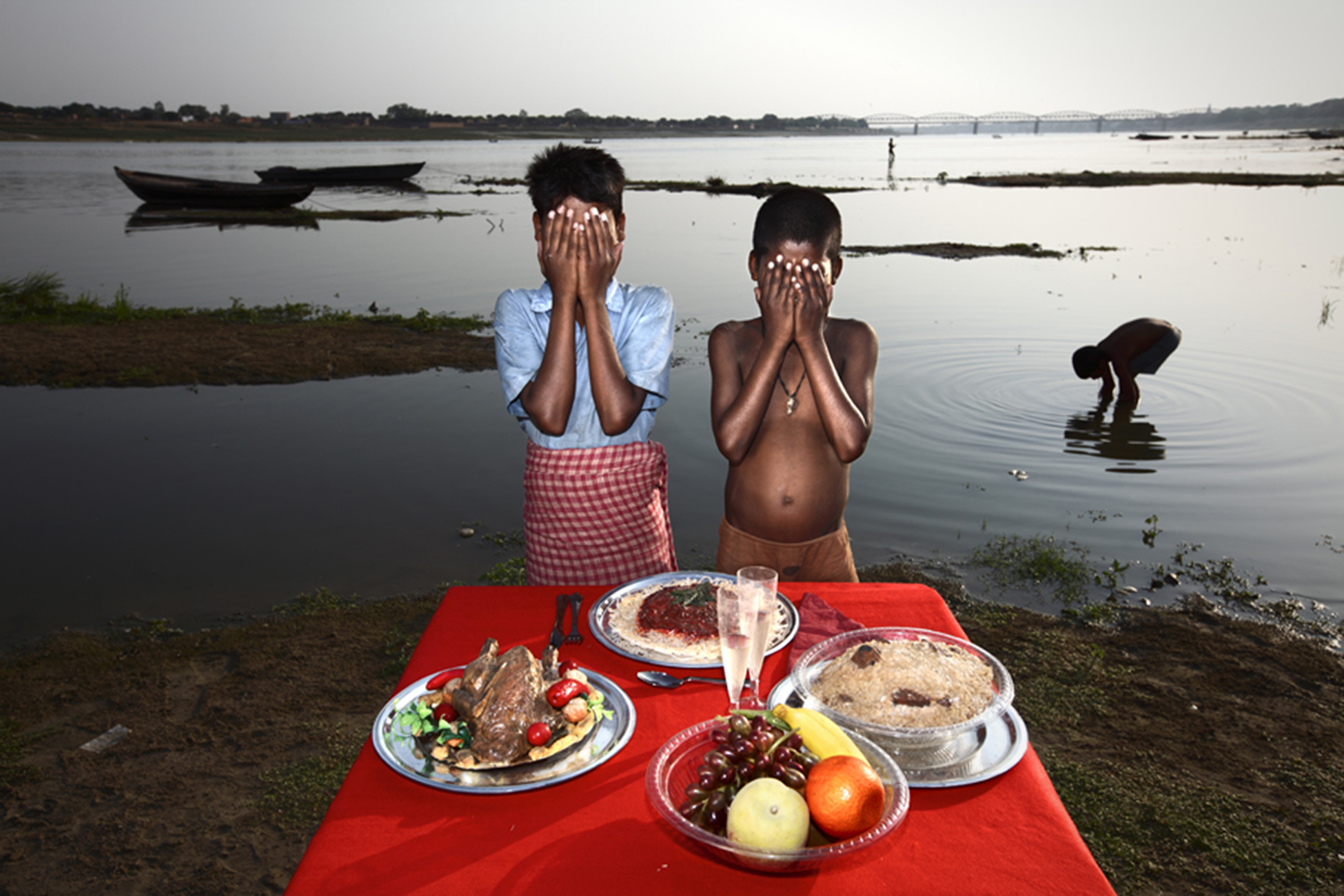
Dreaming Food | © Alessio Mamo 2011 | Source Internet
Indian Photography’s (conceptual) Poverty and Reality
Ruminations about Alessio Mamo’s Dreaming Food photo project
Alessio Mamo’s series of photographs titled ‘Dreaming Food’ was shot in Uttar Pradesh and Madhya Pradesh in 2011, in which he tried to illustrate the contrast in the manner food was wasted in the West “especially at Christmas time”, and the widespread poverty that he saw in parts of India. The series was exhibited in Delhi Photography Festival in 2013, but when he posted images from the series during his takeover of World Press Photo’s Instagram handle as one of its awardees of 2018, a public debate erupted around the nature of his work and its political correctness. WPP has since issued a statement in which it clarifies the guidelines for its Instagram takeover, which is a benefit given to its award winners. But Indian print and online media subsequently took up the issue and it has been given wide coverage, with experts, photographers, and commentators weighing in from all sides. Now that all the arguments for and against have been brought out, PhotoMail takes a look at this issue in the broader context of poverty representation in India.
– The Editor
We have heard it all. So it seems. The voice of the critics is the dominant one. The problematic western/alien gaze is at the forefront of the allegations, combined with the privileged position of the photographer. The series is deemed to be exploitative, with the dignity of the subjects having been compromised. Some point out that the west has always loved such depictions of India, and it is time to change. It is accused to be a demeaning representation, one of the primary reasons for the claim being that the photographer made use of fake food and contrasted it with genuinely hungry children. There are also statements that this is bad journalism1 2 3, and that the consent of the subjects is questionable4.
However feeble, there are also counter opinions, mainly focusing on the argument that poverty is a reality in India, and what Mamo did was simply illustrate this fact.
In this humdum of responses, there is little clarity on why this particular series should be judged like this, and what history of representation is being referred to in the process of judgment. The simple truth that what is wrong with ‘Dreaming Food’ has been repeatedly seen in the history of representation of India across all art forms, and that such representations still continue, is conveniently glossed over. While Mamo should be rightly criticized for his work, such criticisms are not the end of the issue – there is a dire need to look deeper at what is taking place, and even the timing and nature of most criticisms are themselves suspect, and must be subjected to scrutiny. Before that, it is necessary to at least skim over the nature of representations of poverty across different media.
Let’s begin from areas other than photojournalism/documentary photography. Satyajit Ray’s Pather Panchali famously sentimentalized poverty without even being truthful (Ghatak condemned the depiction of poverty in Ray’s films, calling it a “clinically disinfected poverty”), but Ray is still honored as an unchallenged figure in Indian cinema. Countless other films, both commercial and arthouse, have showcased India’s poverty, and the notable example of Slumdog Millionaire was mostly celebrated (some did point out that it was poverty porn, but the Oscar wins for two Indians seems to have largely buried such criticisms from within the country). Exotic Indian scenarios, usually depicting a contrast of sprightliness and poverty in a rural backdrop, have been made the premise of various foreign films. This is not a new phenomenon, and has been in practice since the colonial period.
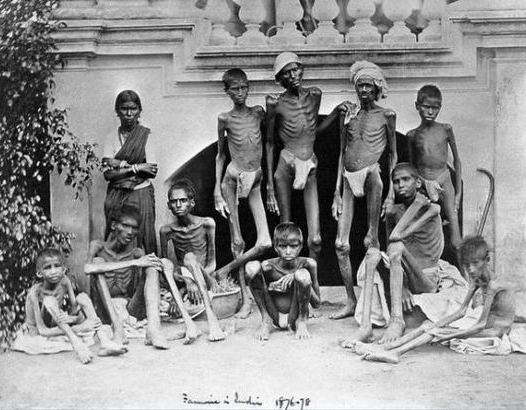
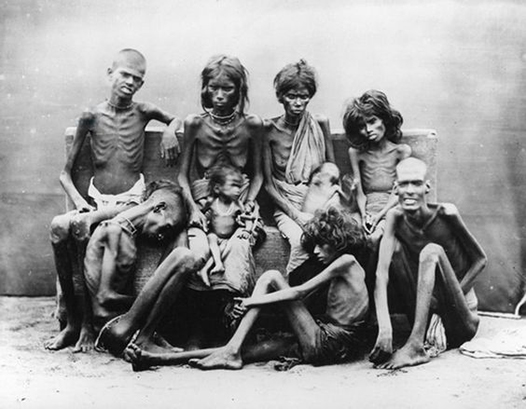
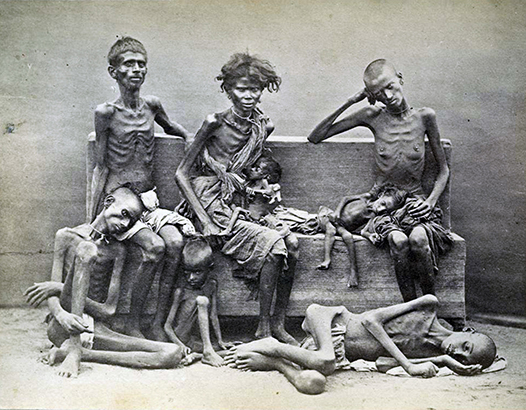
Images 1 – 3 Famine Images | © Willoughby Wallace Hooper | Image Source: Internet
NGOs continuously use the language of advertisements, showing poor people who are eternally smiling thanks to NGO intervention or poor people who are eternally sad because of lack of intervention. The organizations proceed to ask for support, or proclaim victory. Leaving behind the ethical conflict underlying the use of the language of commercial advertisements by NGOs, there has been no widespread concern regarding the dignity of the people photographed for such NGOs. It should be noted that Mamo’s series was also executed with the help of an unnamed NGO, which makes this angle especially relevant.
Magazines have long loved showcasing poverty and other marketable aspects of India5 (and other developing countries). For instance, Outlook India’s website’s gallery for poverty related images shows 159 entries, among which both cartoons and photographs find place6. Pinterest shows plenty of such hits for tags such as “Indian poverty” or “famine.” Similar depictions also find place today in the documentation efforts of National Geographic and BBC. Most of the images share the perceived faults of Mamo’s photographs, yet don’t seem to be facing any flak. In truth, “poverty porn” images are so abundant in all areas of representation that picking out individual examples seems pointless.
So, what caused the outrage is now a mystery. Of course, the trigger was that it was posted on the Instagram handle of a reputed organization promoting realistic documentation like World Press Photo, a point which must be returned to later. The same works exhibited at the DPF in 2013 (during the Congress rule), or its publication on the Google Arts and Culture7 platform didn’t cause this stir in India. Is it linked to the changing Indian political power, or to the wider scenario of reactionary politics undertaken by the intelligentsia? Can it be attributed to a rising recognition of liberal politics, or is it simply a Western reaction which has been picked up and carried on by Indians? The remnants of the colonial gaze in Indian photography has definitely been noted, but this demands an honest look at the medium and its expressions since the colonial period.
For the outsiders, India has always been a land of poverty and spirituality; an exotic, primitive, and ancient civilisation where fantasies and fables play out and which is home to contrasts of all kinds. The hub of this stereotype is Varanasi, from where images reeking of material-poverty-and-spiritual-richness regularly find their way into the eyes, cameras, and sketches of the outsiders, Indians and Internationals alike. As far as photography is concerned, such stereotypes are a result of its introduction and use as a colonial tool, intended to make India a destination for investors and charity organisations, coupled with a condescending approach to the natives. This attitude is well visible in colonial documentation projects, undertaken under the guise of anthropological research and as production of exotic images8. It permeated the coverage of major events in the subcontinent, right from the First War of Independence, through to 1947. Recall that the documentation of the 1943 Bengal famine by Indian photographer Sunil Janah, who continued using the same gaze, guided by the Communist party who were supporters of the British rule, focused on the starkness of the tragedy. Such an outlook must have been necessary at the time, or even been difficult to surpass, but what it has done is to set an example of how tragedies should be covered; the assumption is that the viewer is always out of touch with the tragedy, and that photographs should serve the purpose of reminding him/her of the nature of tragic sadness. In the circulated body of images of the Bengal famine, there is little evidence of the economic system, the war, and the social circumstances that made such a brutal tragedy possible even as the modernization drive was being carried out by the colonial government. For his part, Sunil Janah later pointed out that the British did little to control the situation, and instead prioritized the war efforts.
However just the cause is, the medium itself comes with certain limitations and it violates the rights of the one who is photographed. It is difficult to imagine that proper consent was obtained by Indian and International trendsetters like Henri Cartier-Bresson, Margaret Bourke-White, Raghu Rai5, Raghubir Singh, Sunil Janah, and Steve McCurry; McCurry’s famous image of a beggar woman with her child standing outside his car’s window, getting drenched in the rain, and trying to get his attention springs to mind, a photograph in which the window of the car is clearly down and there is no chance at all of McCurry having made any communication, let alone ask for consent. The style of street photography promoted by these masters, and followed by nearly all photojournalists, makes it impossible for consent to be obtained. That most of their subjects are in a lesser privileged position than the photojournalists is something that cannot be contested. Unethical practices in journalism or documentary works, to spread the agenda of a magazine or a political party are not unheard of. Stories are plenty regarding the kind of exploitation carried out by reporters and photojournalists, right from the top of the ladder and down to the juniors.
The problem in case is not the portrayal of poverty as such but of the medium and form itself is reinforced by the fact that the accepted patriarch of Indian cartoons, R K Laxman, has used such simplifications throughout his whole career as a cartoonist, but is yet to be seriously and publicly denounced by anyone. That he is an accepted patriarch and Mamo is relatively unacknowledged definitely has something to do with it, but that is not all, because R K Laxman has drawn cartoons in the same format that Mamo has used in his photographs. It is hardly plausible that stature is the only saving grace here. By extension, the same can be said of the celebrated photojournalists of India.
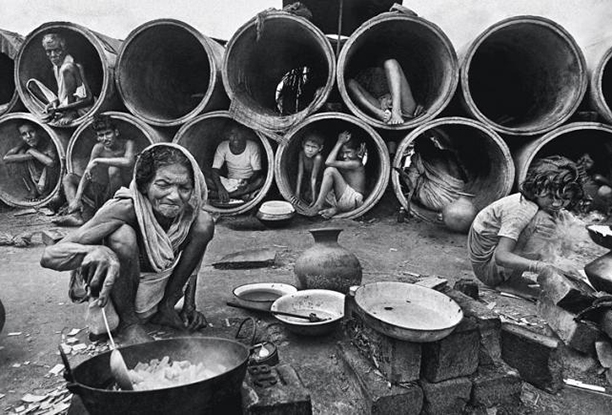
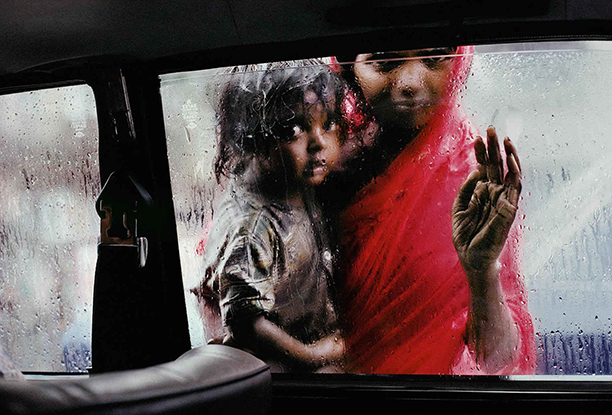

Images 1 © Raghu Rai | Image 2 © Steve McCurry | Image 3 © Henri Cartier-Bresson | Image Source: Internet
What, then, is the premise from which the critics are speaking? Is ‘Dreaming Food’ being addressed as a photojournalistic work that depicted reality through fabricated means, or a conceptual work that didn’t communicate? The former charge implies that photojournalistic works have so far stuck to reality, and not romanticized it or marketed it; and the latter would simply make it a badly executed artwork. Clearly, neither charge by themselves hold enough weight to warrant such a public outrage, even if one takes into account the mob-like nature of social media reactions.
The larger issue in the debate, one that everybody seem to be ignoring, is that of the photojournalism itself. Photojournalists have acquired a burden of walking a line which must weave in and out through both Truth and Art, and in most cases including this one, do not have a theoretical explanation of what makes photojournalism either of those. This confusion seems to be the reason why the eruption happened only after the Instagram posts, and it must be noted that no real discussion about why such a form was chosen, and what is “conceptual” about it, has taken place. Interestingly, the whole event follows the pattern of “political correctness” discourses, which get stuck on endless debates about how to represent without offending certain sensibilities, that the core issues get buried without even a mention – the criticisms haven’t touched on important questions such as whether all staged photos qualify as conceptual, how far one can take staging, how staging affects the truthfulness of the photograph, how photography does not seem to be able to depict the global market relations in a nuanced manner, and why such depictions of “real” poverty continue to be marketable. The very imagination that considers Indian people to be dreaming about a Western, aristocratic dinner is a major problem, and this political aspect of imagination does not seem to have been questioned; nor are there mentions of the resemblance with advertisements of food products.
Married to the ignorance in these areas is the inability of photojournalists to create something “new”; desperate in their effort to be artists, are photojournalists falsely propagating themselves to express some moral or message to society? Isn’t photojournalism a job, undertaken according to the agenda of some magazine or political party? In this photoshop era, is there anything in photographs that is real? The last question would seem silly and rhetoric, yet the outrage over the food that was used for the shoot being fake shows that it is not – how ridiculous is it to claim that using real food would somehow have made the images any different, or that since fake food was used, the children would not have been provided food prior to or after the photograph was taken?2 This particular line of attack can only be attributed to a misunderstanding of the medium.
Here, we touch on one of the many undisclosed reasons behind the reactions. While it is a welcome sign that discussions regarding inappropriate representations in Indian photography are happening, narrowing it down to one person and ignoring all the other representations is deeply problematic.
Another issue pulsating in the background seem to be the market itself and a competition to grab the same. It has to be admitted that there is a growing market for and in India with its population of 1.3 billion people, most of whom are untapped either as resources or as potential consumers, and there is funding available for exploring this market. There has been a pronounced request for Indian photographers to depict India – what is this but an eerie ghost of the Nationalist view of post-colonialism? Is the fight between Indian and International photographers over who gets to photograph the helpless people, or is it of the medium itself and its expression5? What precedent do we have to believe that Indians representing India will make any difference, even if we ignore the fact that the Indian market is dependent on the global economy in all spheres including arts?3 Unless this is dealt with honestly, we will end up continuing the same trend, maybe in a slightly subtler way.
Indian photography, and photography in India, has rarely broken away from strict formal traditions and formats, and if not either of these, from its stereotypes. While a few artists have been experimenting with the medium, most of the works which gain exposure are ones which follow established Modernist schools of the West and are limited to a few urban practitioners and their circles. The spectres of a few master photojournalists haunts the Indian photography scenario, and we have rarely thought of photography in a manner which bypasses the crude symbolism utilized by photojournalism. It needs to be stressed that all the celebrated photographers in India are photojournalists and commercial photographers, and none of whom can claim to have developed an original interpretation of the medium.
India should have a greater claim in the history of the medium than it is afforded, since it was introduced here immediately after its invention. However, sadly, we have contributed very little to explore its unlimited potential, whether creative and documentary. There are countless other ways to express poverty or social issues at large, apart from putting people who look physically weak alongside a table of expensive food. And, there are countless other creative expressions possible through this medium. There has not been a single concerted movement within the medium in India, compared to the various schools of thought in Western photography – the masters who curtailed the medium within the chains of colonial expression should be held accountable for this. Divisions within the photography community and a sectarian attitude have ensured that there is little study as to the history of the medium, with true originality being ignored and fresh theorizations being discouraged, while those rehashing old content are being promoted according to the whims of commerce and galleries/museums. Photo festivals and other major events get their funding from foreign sources, who would naturally be keen on promoting the styles and works of their own photographers and, in the process, deride the efforts and expressions of others.
Why are photographers silent about these burning issues? Is it that when one’s own interests are at stake, people begin to talk, but then become silent when the medium suffers? Alessio Mamo’s work needs to be placed against this backdrop, and understood as one which somehow fell onto the firing line whereas numerous others escaped. The deeper rot is yet to be addressed, and it definitely cannot be rectified simply through voicing opinions.
_________
References:
[1] Alessio Mamo’s ‘Dreaming Food’ Was Definitely in Bad Taste | Priyanka Basal | Published by The Quint | Published on 30th, July 2018; [2] Row erupts over ‘poverty porn’ images of Indian villagers with fake food | Peter Beaumont | Published by The Guardian | Published on 24th, July 2018; [3] Poverty porn or bad judgment? Photographers address row over Alessio Mamo’s photos of India | Manik Sharma and Suryasarathi Bhattacharya | Published by First Post | Published on 29th, July 2018; [4] What Alessio Mamo got wrong. No, its not about India, its about the kids | Upasna Das | Published by Qrius | Published on 25th, July 2018; [5] How capturing India’s poverty helps western photographers bag generous grants at home | Shobita Dhar | Published by The Economic Times | Published on 29th, July 2018; [6] Poverty Photos | Published by Outlook India | Published on different dates; [7] Alessio Mamo’s Dreaming Food series | Published by Delhi Photo Festival at Google Arts and Culture; [8] Who was the photographer who took these dehumanising images of the Madras famine? | Sujaan Mukherjee | Published by Scroll.in | Published on 20th, November 2017
Published on August 5, 2018
Share
Related Articles
A Canvas of Motions
Young photographer Arun Inham's A Canvas in Motion combines photography, theatre, and performance, is one of those projects that fall within the scope of now-trending experimental and conceptual photography practices. This body of work was done during the pandemic lockdown period. Confined within a small space, he interestingly stages objects and stitches them together as an image. These works were showcased at the Images of Encounter online group exhibition, which would be Arun Inham's first show.
Dilli Chalo: Ready for the long haul
As part of the ‘Dilli Chalo’ protest called on November 26 and 27, lakhs of farmers, laborers, and small traders decided to march from Punjab, Haryana, western Uttar Pradesh, Madhya Pradesh, and other states towards Delhi. During their attempt to reach Delhi, the farmers faced warlike resistance from the Indian government at two inter-state borders. Protesters occupied several miles of highway with their tractors and trolleys.
The Long Walk to Home: A Critical Reading
During the corona pandemic lockdown, India saw its migrant workers walk in an ardent will to reach the safety of their homes… History repeats itself, they say. Well, not exactly the same situation, but during Indian’s partition, thousands of Muslims and Hindus had to cross over – in search of a new home in unknown terrain. Seen through the photographic eyes of Margaret Bourke-White and Sunil Janah – the horrifying events of Indian Partition 1947 comes alive – once again in the Corona days – much more violent, cruel, and gruesome. It is a stark reminder that even after 70 and odd years of independence, India still has not healed itself of poverty, inequality, and oppression.
Perspectives on Photography
What we normally forget is that the lens of a camera sees more than the normal human eye is capable of. The clarity and the depth in a photographic image are taken for granted as we considered the camera as an extension of our eyes though what it sees is an abstracted or unperceivable image for the naked human eye. Seeing more or seeing in detail foregrounds the notion of abstraction because the form captured by the camera is only partially visible and its comprehension, in the normal course of our ways of seeing, is difficult.
Iconic Faces, Zooming into Raghu Rai’s photographic practice
Portrait photography is one of the areas where Raghu Rai has displayed mastery, and where he has revealed his own deepest convictions about the medium. Photomail investigates photographs of four spiritual and political leaders made by Raghu Rai, seeking to find what patterns run beneath the surfaces of these images.
Indian Photography’s (Conceptual) Poverty and Reality
Alessio Mamo’s series of photographs titled ‘Dreaming Food’ was shot in Uttar Pradesh and Madhya Pradesh in 2011, in which he tried to illustrate the contrast in the manner food was wasted in the West “especially at Christmas time”, and the widespread poverty that he saw in parts of India. The series was exhibited in Delhi Photography Festival in 2013, but when he posted images from the series during his takeover of World Press Photo’s Instagram handle as one of its awardees of 2018, a public debate erupted around the nature of his work and its political correctness. WPP has since issued a statement in which it clarifies the guidelines for its Instagram takeover, which is a benefit given to its award winners. But Indian print and online media subsequently took up the issue and it has been given wide coverage, with experts, photographers, and commentators weighing in from all sides. Now that all the arguments for and against have been brought out, PhotoMail takes a look at this issue in the broader context of poverty representation in India.
Power, Democracy and ‘Other’ Women
Photography, after the Second World War and McCarthyism, was consciously pushed into the sanitised spaces of Art galleries and Museums away from its past as a concerned, conscience-pricking tool. We were told by institutional gatekeepers like the Museum of Modern Art in New York that Photography was only about Itself. It was an Art form that was about navel-gazing photographers and about flattened formalist fields. Photography was not supposed to exist outside its own frame.
Stills Still to Fade, Immortal images of NL Balakrishnan
Does a photo carry a meaning? Like a memory which has a meaning, photo doesn’t in itself have a meaning. Stills don’t speak but they are not dead as such. They evoke memories and memory evokes the meaning behind the image. - NL Balakrishnan


